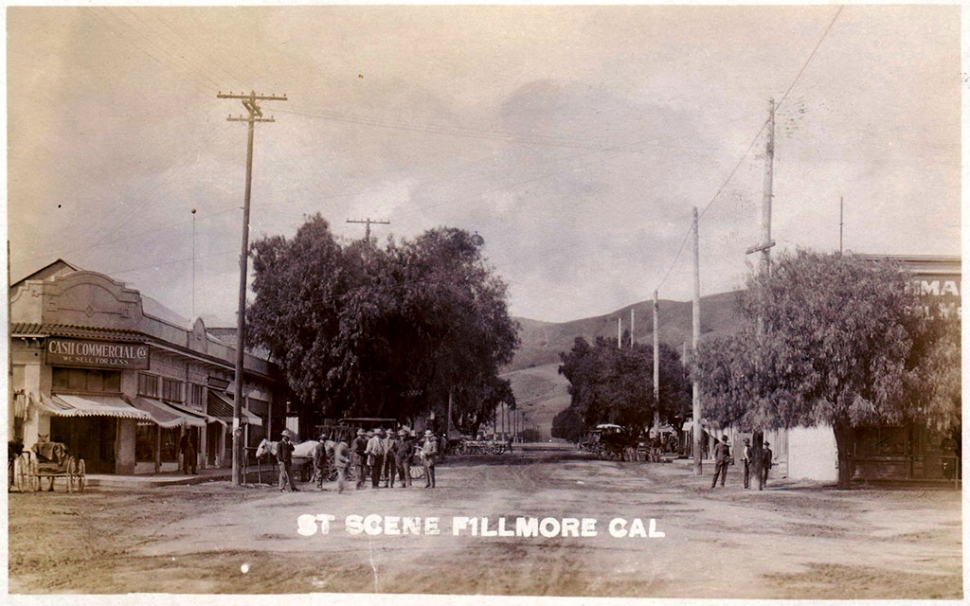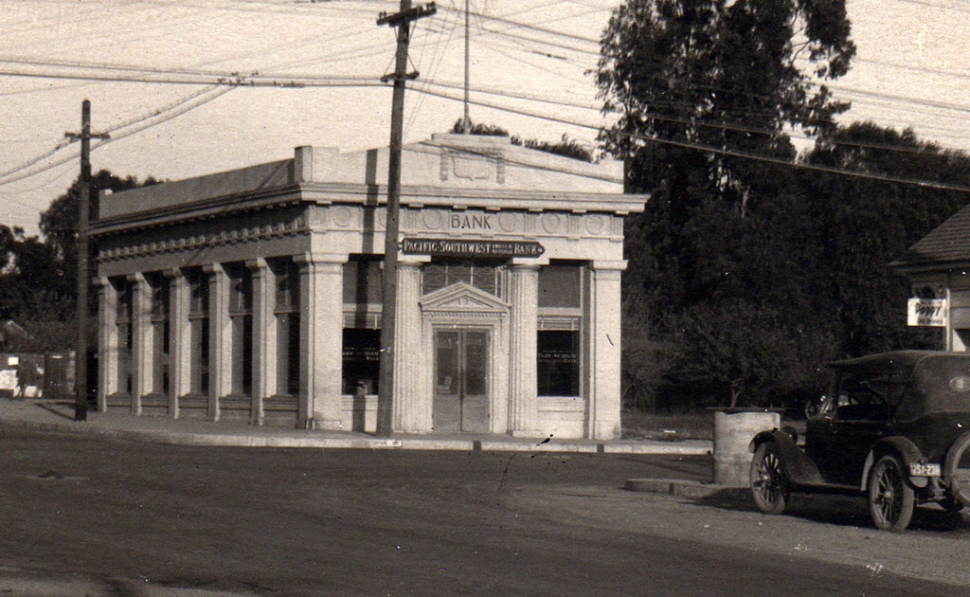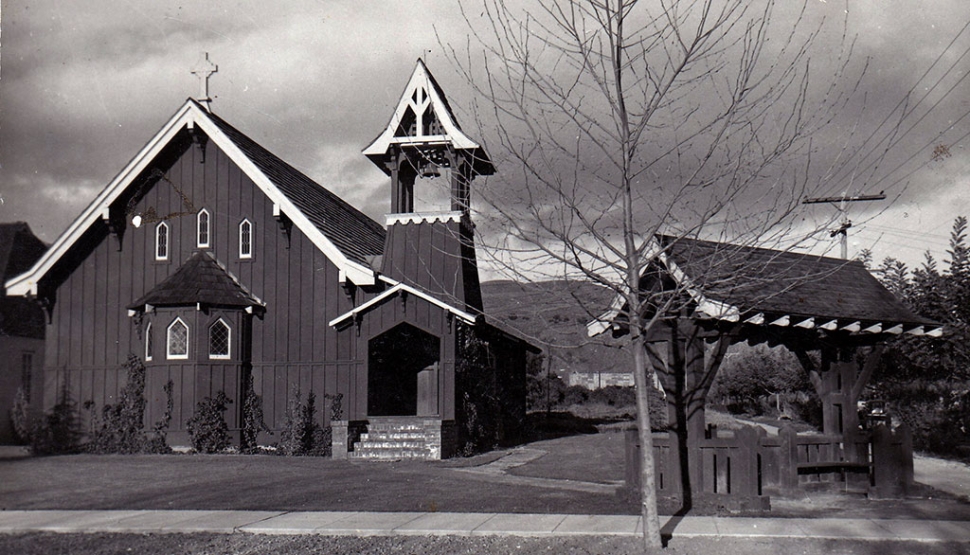|
Richard Stephens, Fillmore Pioneer
 The Store circa 1911, about when Stephens sold it and it became Cash Commercial Store. By Anonymous — Wednesday, October 21st, 2020
Part 2
 Pacific Southwest Trust and Savings about 1923 when Stephens was vice president of the bank.  Trinity Episcopal, circa 1940. Courtesy Fillmore Historical Museum Part 2 In the years before Stephen built his new store, the old-time lock boxes for the patrons of the post office were located on the outside of the building. The arrival of the mail was an exciting event. Rain or shine, everyone gathered outside the store to get their mail and exchange the latest news with their neighbors. On September27, 1907, the big topic of discussion was the electric light Stephens had strung across Central Avenue from his store to the store of Harmonson and Rood. This was Fillmore’s very first street lighting. Stephens’ new building, which opened on March 12, 1910, was a one-story structure of stucco over brick, designed mission-style and built by contractor J. C. Blair. The post office was separate from the store with its own entrance as well as an entrance from the store. Over the outside entrance to the post office, a flagpole was erected. This flagpole remains in place today (1988), though it is no longer in use. In addition to the post office, this modern store offered general merchandise, a meat market, a public telephone, and a small jewelry store run by John Lawton. A six-foot cement sidewalk, one of the first in downtown Fillmore, was put in at the new building. At the store’s corner entrance, which faced both Main and Central, the sidewalk at the threshold featured the owner’s name set in green and white tiles. The tiled name remains in place to this day (2020 – it is still in place). Like most of the early businessmen of Fillmore, Richard Stephens was deeply involved in the affairs of the community. He was one of the organizers and a director of the Fillmore State Bank until 1913 when, with others, he organized the Fillmore Branch of the Farmers and Merchants Bank of Santa Paula. After that institution was consolidated with the Pacific-Southwest Trust and Savings, Stephens became vice president of the Fillmore branch. In addition to many other interests, he owned several extensive citrus ranches He and his wife Stella, whom he married in San Diego on Christmas Day in 1903, were members of a group instrumental in bringing the Trinity Episcopal Church building from the Bard Estate in Port Hueneme in 1933, to land donated by Stephens. Perhaps because they had no children of their own, Richard and Stella Stephens were most generous to the children of Fillmore. Each Halloween they opened their lovely home at 554 Central Avenue to the children of the community. Each Christmas they were hosts to all the children at a special picture show at the local theatre where the small guests were given treats and gifts. It is appropriate to call attention to Fillmore’s past. Much of that past is vanished now, remembered only by words and pictures. But some of the past is still with us today, a part of our everyday lives. Nowhere is there a better example of this blending of past and present than the Fillmore Market (2020 Estella’s Market), Richard Stephen’s old store, still serving the people of Fillmore as it has since 1910. Next time you pass that historic northwest corner of Main and Central, look down to see the green and white tiles spelling out the name “Stephens”. Part of Fillmore’s past is still part of Fillmore’s present. |
